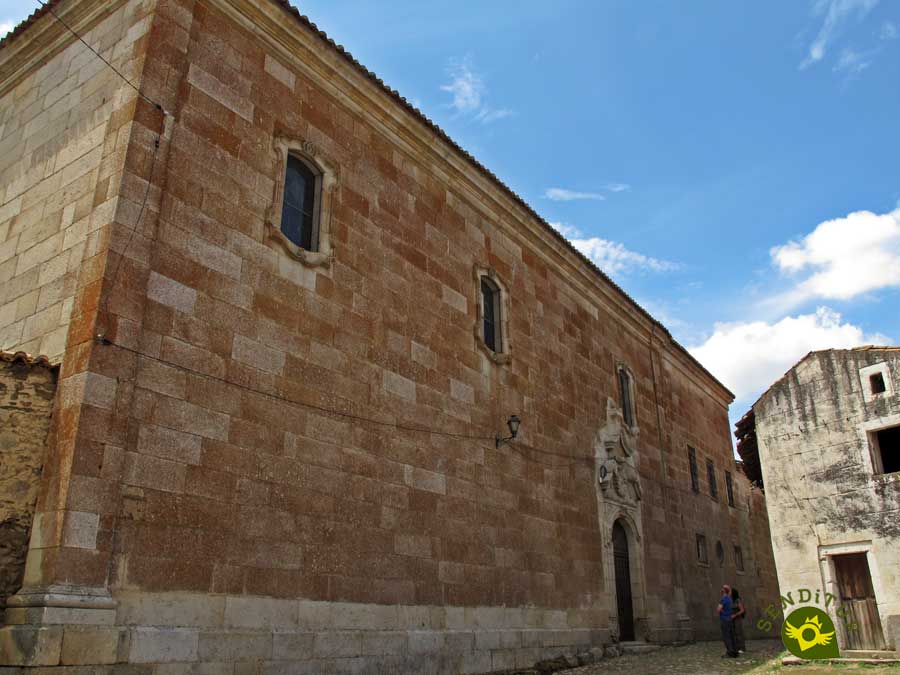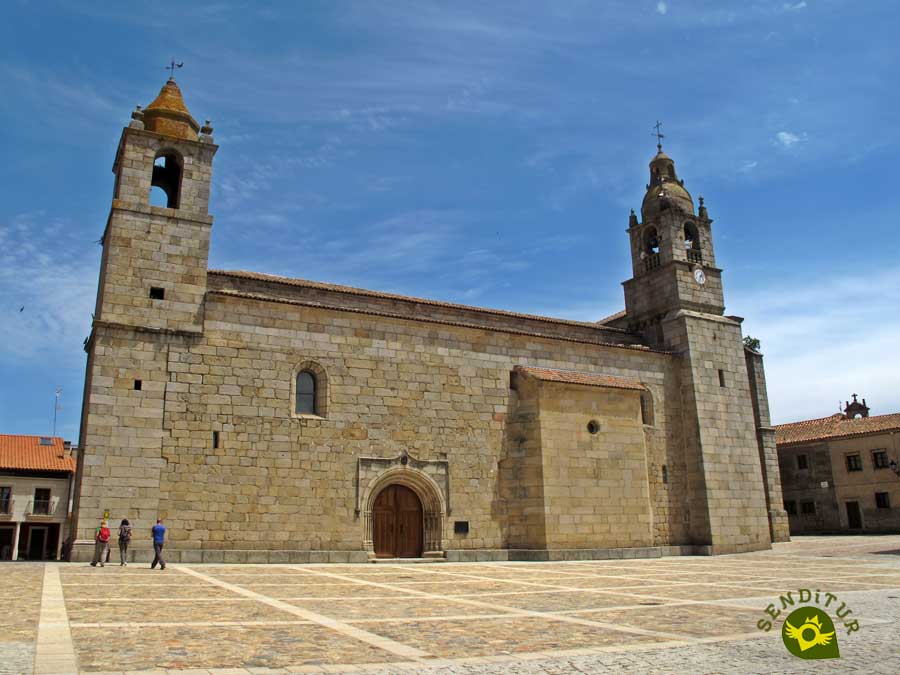It sits on a plain between two hills, in the northwest of the province of Salamanca, where the River Águeda, a tributary of the Duero, acts as a natural border with Portugal, with a spectacular and characteristic orography given by the Arribes del Águeda within the Arribes del Duero Natural Park. The Veton occupation in the area has also left in San Felices de los Gallegos its small stamp, castros and boars testify it. After Viriato's defeat by the Romans, San Felices de los Gallegos became part of the Roman Lusitania, although the current town was founded in the 7th century. The Arabs destroyed it in their harangues and it was repopulated for the first time by King Ramiro II of León in the 10th century, although it was definitively reconquered by Alfonso VII the Emperor in the 12th century.

In the 13th century it acquired the category of town, a title with which it is mentioned when in the year 1291, King Sancho of Castilla, granted it the privilege of having the Monday Market. Its location, in La Raya, on the natural border with Portugal, has meant that San Felices de los Gallegos has been coveted and disputed by the Castilian, Lions and Portuguese kingdoms, and throughout history it has belonged to one crown or another. A town of disputes, raids, invasions and fights, but at the same time a town favoured by privileges and royal favours. During the War of Independence against the Napoleonic invasion, San Felices de los Gallegos was once again the scene of fights and confrontations, which did not spare it from being subdued and being occupied by the French for three years. With the territorial division of Spain in 1833 and the creation of the current provinces, San Felices de los Gallegos is included within the Region of León.

San Felices de los Gallegos has been declared a historic-artistic site and adds the attractive landscape of the Arribes del Duero Natural Park to the rich cultural heritage it has in its urban development. It has hiking trails where you can discover beautiful spots in the river ecosystem of the Águeda River. Deep cuts, narrow paths and horseshoe roads that lead to beautiful places of difficult access, where the colonies of birds that have found their habitat there, black storks, vultures, alimoches, partridge eagles, booted eagles, golden eagles, eagle owls, owls..., fly over a varied vegetation of oaks, oaks, junipers, beeches, ashes, maples or poplars.

Being part of the Border Fortifications Route, San Felices de los Gallegos cannot help but remember that once it was a town that had up to five defensive enclosures. The visitor will remember the history of the town if he approaches the interpretation centre that at present is housed in the Tower of the Homage, of the 12th century castle, although this was reformed in the 15th century and rehabilitated in 1990, and he travels through the Old Fence and the 18th century fortification. In the square you will find one of the oldest representative symbols of the town, the Bell Tower, built in the 13th century, almost contemporaneous with the castle, it is speculated that it was the belfry exempt from the old Romanesque church, which is now Nuestra Señora entre Dos Alamos. The 14th century Arch of the Port, is one of the doors of the now disappeared fifth enclosure, it was the main entrance to the town. The Convent of the Passion was built at the beginning of the 16th century. The hermitage of the Rosary, from the 18th century and the hermitage of the Divine Lamb, from the 17th century, the centre of the fervour of the villagers and the surrounding area, together with the museums such as the Olive Oil Museum "El Lagar del Mudo" or the Interpretation Room of the Quarry, complete a route that will undoubtedly make you empathise and understand the history, culture and traditions of this village and its people.

San Felices de los Gallegos celebrates its most outstanding festivities on the first weekend of May in honour of the Holy Cross; the Ninth is celebrated on the second weekend of May.
Since 1864, and as tradition dictates, the festival El Noveno, declared of Regional Tourist Interest, is celebrated in San Felices de los Gallegos, commemorating the release of the payment that the inhabitants of the town had to make to the Duke of Alba, every year in May, of a ninth part of their crops. This tax dates back to the time of the Catholic Monarchs when they handed over the town to García Álvarez de Toledo, the first Duke of Alba, who imposed this tax on his estate. Since the time when, during the reign of Felipe II, the sanfeliceños bought the royal lands of their district from the king, they began to litigate for the abolition of this tax, which they did not achieve until 1852 after a long legal process.
San Felices de los Gallegos seems to owe its name to its founder, a bishop of Porto called Don Félix, who in the year 690 and in honour of his own name named it "San Felices" and its surname was given by its first settlers, natives of Galicia, "de los Gallegos".

Legends of castles, princesses, hidden treasures... in San Felices de los Gallegos the history of the Bell Tower can still be heard today in the stories of the sanfeliceños. It was in the year 1476 when the town mutinied against its lord, a certain Gracián de Sessé. Such were his excesses and abuses that in a popular harangue, the villagers decided to hang him from the arch of the tower after capturing him. It is said that, amidst stones and shouts, the shadow of the hanged man stretched out towards the square. Even today, if you stop to listen under the tower's arch on a cold winter's day, you will sometimes hear the wind bringing the sounds of those days. And if you search the stones of the facade you will find the figure of what looks like a dog and another anthropomorphic one, does it represent a man hanging?
MORE ROUTES AVAILABLE, DON'T MISS IT...
MORE PLACES AVAILABLE, DON'T MISS IT...
The SA-324 road links San Felices de los Gallegos with Lumbrales on one side and with Ciudad Rodrigo on the other, passing through Saelices el Chico and Castillejo Martín Viejo.
San Felices de los Gallegos has a bus service that connects it to Salamanca at different times of the week. The telephone numbers for further information are 923 223 388 and 923 520 013
SENDITUR is not responsible for any variation in the information described, as well as for the misuse of its guides and recommends that everyone be responsible and prudent in carrying out the activity. Likewise, we invite you to document yourself with books and specialized guides to complement the information described. From the commitment of SENDITUR with Nature and the respect to the balance of the environment, SENDITUR urges you to travel in a responsible way, with low environmental impact and respecting at all times the Natural, Cultural and Social environment wherever you go. For any suggestion, SENDITUR invites you to send an email to .
Continue watching …